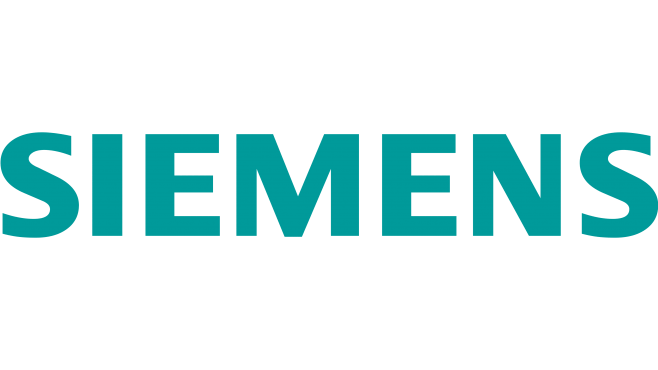
Smart infrastructure is already playing a key role in delivering more efficient, resilient and sustainable communities. What discussions in this space often overlook, however, is an awareness of the unique desires and requirements of the individuals who form these communities.
Smart buildings interact with their surrounding systems, external elements and people – individuals making unique choices and living different lives. For smart solutions to deliver on their promised benefits, the specific priorities, preferences, requirements and lifestyles of those individuals must shape how buildings are designed, programmed, adopted and adapted.
“While there is no ultimate definition of a ‘smart’ building,” acknowledges Henning Sandfort, CEO of building products at Siemens Smart Infrastructure. “The degree of smartness grows with the ability to meet those individual needs.”
“We could say that ‘smart’ always includes the latest technological advances for the benefit of those who use and operate the building,” he adds. “A decade ago, this was being able to connect everything from HVAC to fire safety and security, to monitor and control it from one management platform. Now, in 2021, there are so many more aspects.”
Among the aspects Sandfort lists are advancements in IoT and cloud-based building management; enhanced automation functionality; the use of AI to adapt to and prepare for user behaviours; and an ability to balance loads with the grid in a rapidly changing energy environment.
However, technology is the means not the end. True value is defined by that tech’s ability to create a more sustainable and energy efficient buildings environment, decrease operational costs across a building’s life cycle, and create a safer and more comfortable and healthy environment for its users.
The collective delivers for the individual
The environmental component is an increasingly urgent factor. Buildings consume 40% of energy worldwide and therefore offer huge scope for global emissions reductions. However, 90% are not yet designed for energy efficiency, with the integration of smart solutions offering unprecedented scope for the retrofitting of legacy infrastructure.
Legislative instruments such as the EU’s Energy Performance of Buildings Directive (EPBD) mean failure to respond is fast becoming a non-option, driving greater performance standards and forcing governments and asset owners to develop long-term renovation strategies for existing building stock. Under EPBD guidance, for example, all major renovations must include self-regulating devices for individual room control, integrate building automation and control systems for all non-residential buildings with HVAC outputs in excess of 290 kilowatts, and introduce e-car charging stations.
“Digitalisation of the building solutions is at the heart of future-proof building automation,” says Sandfort. “Advancements with IoT-based technology allow you to ‘jump over’ some of the traditional steps. The benefits are lower investment needs and lower starting barriers. You can start small, integrating with existing devices such as sensors or actuators, introducing IoT-enabled devices, and scale up step by step, depending on needs and available investment capital.”
The ability to space out investment while ensuring resilience is a powerful message for building owners, and it is even better that they do not need to have a detailed picture of where they are trying to get to right at the beginning as requirements will evolve over time. Also, in smart buildings, there is no such thing as a ‘one-size-fits-all’ approach. Different stakeholders have different priorities, in turn necessitating different solutions and strategies.
“For instance, a perfect building from a user’s point of view could be one that makes them as comfortable as possible when indoors,” says Sandfort. “From the perspective of the owner, for whom the building is a business asset, perfect might mean a building that is as competitive as possible on the real estate market.”
“For me personally, it depends on my current activities,” he adds. “For working, I like the temperature at 21°C, good air quality and lighting, and blinds that support me reading on the computer screen. And, as much as I like to be outside and to walk in nature, I appreciate the ventilation system in my office, especially when suffering from hay fever in spring.”
Paradoxically, catering for individual needs can only be achieved through a collective approach, involving the contribution of solution providers, consultants, architects and technology providers. Simply investing in smart solutions does not, on its own, create a truly smart building, though it may address certain pain points.
“Our solutions are always focused on the outcome,” says Sandfort. “In other words, it is to serve our customers. It comes from their individual starting points, identifying the requirements of the people and businesses using the building. In short, it is always technology with a purpose.”
“You need to invest strategically, and that does not mean that you have to know all of the end results when you start investing to make your building smart,” he continues. “You can proceed incrementally, but if your solutions are stand-alone, if data is not analysed with the goal of optimising performance, and if solutions are not integrated, you may not get the results you wished for.”
The post-pandemic perspective
The Covid-19 pandemic highlighted the benefits of leveraging IoT-enabled technologies to optimise performance, with empty office buildings benefitting hugely from automated and remote functionality. Now, as we return to some semblance of a life akin to that of pre- March 2020, what people prioritise from their buildings has understandably evolved. Health, well-being and resilience have never seemed more important.
“Long before the pandemic, there were good reasons to consider people’s health, safety and well-being, considering that we spend 90% of our lives indoors, but the pandemic has been an accelerator for certain trends that had already started,” says Sandfort. “It is giving momentum in particular to the topics of sustainability and building flexibility, with digitalisation being the enabler for both of them.”
“CO2 and volatile organic compounds levels, temperature, humidity and lighting are all aspects that influence people’s health massively. A person’s subjective well-being affects his or her ability to work effectively and create the desired outcomes, but that is only one side of the coin. For enterprises, health and potential sick days, as well as low productivity, have a direct impact on the bottom line.”
Utilising office space in a responsible way demands clear health and safety measures, and a focus on issues such as air quality, air purification, human-centric lighting and other factors that affect individual performance and well-being.
A truly smart building will optimise its systems and its data architecture around both high-level outcomes such as energy efficiency and individual needs, notably personal comfort, helping to deliver that trust.
“In the recent past, smart cities have sometimes been criticised for introducing tech for the sake of tech,” notes Sandfort. “The guiding principle must be to serve people’s needs.”


